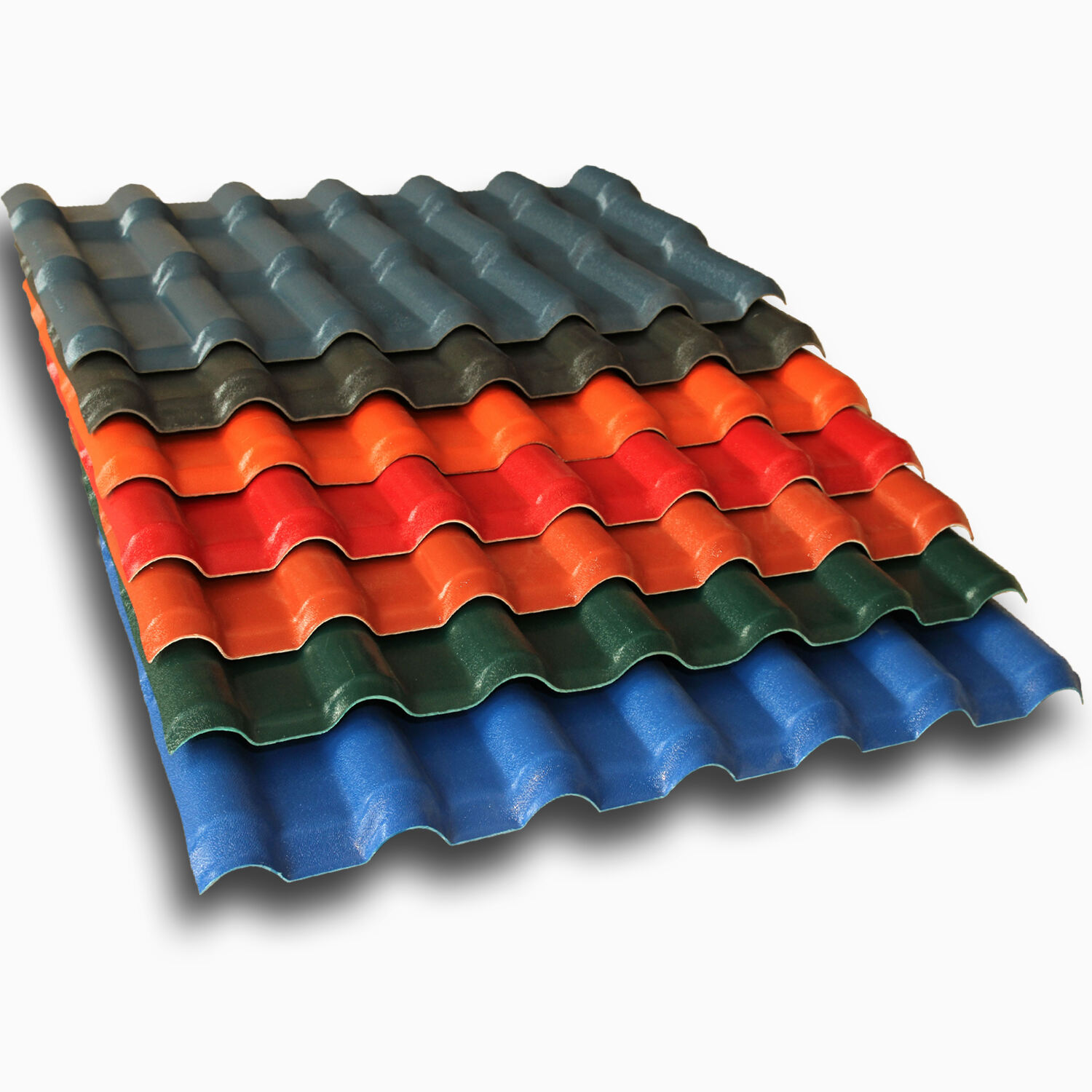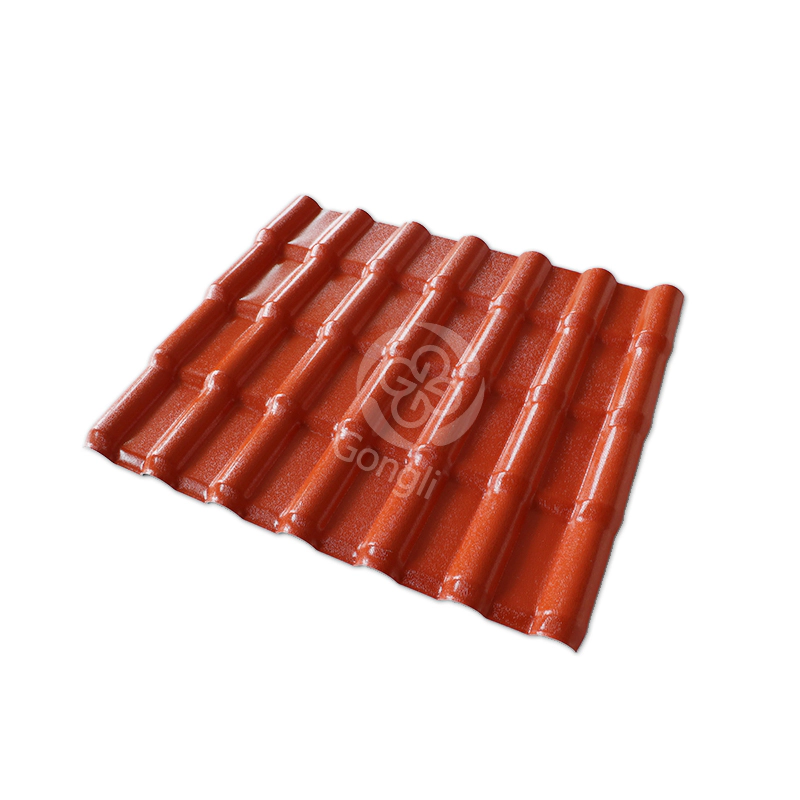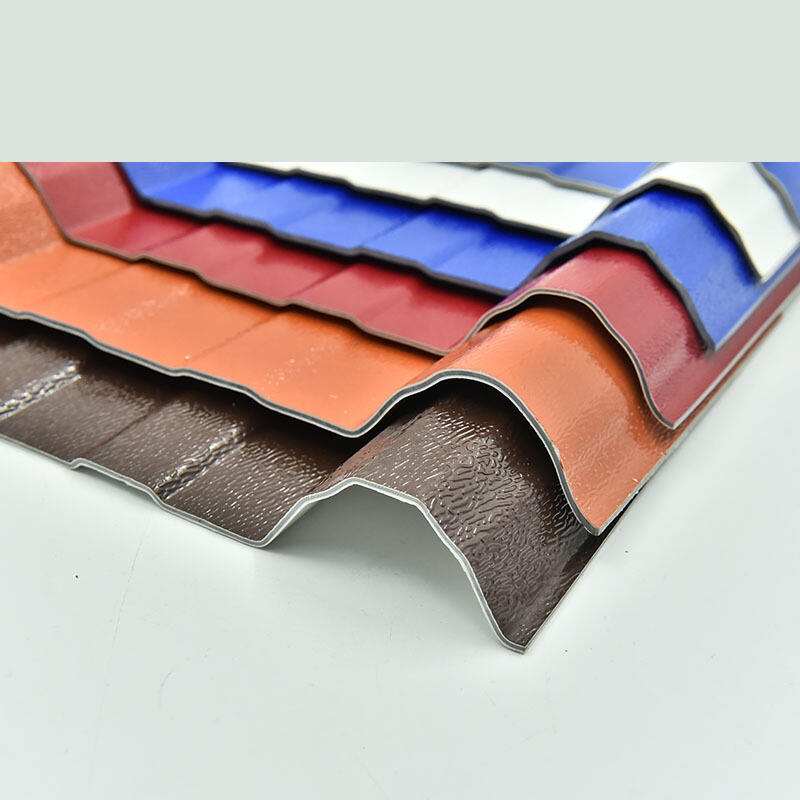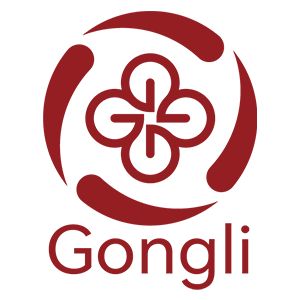Composite Roof Tile Factory for Efficient and Reliable Production
Advanced Manufacturing Techniques for Composite Roof Tiles
Automated Production Lines for Consistent Quality
Automated production lines are revolutionizing the manufacturing process for composite roof tiles, ensuring consistent quality and enhancing efficiency. By utilizing robotics and cutting-edge machinery, these advanced lines minimize human intervention, which significantly reduces error rates and ensures each tile adheres to stringent specifications. Automation in quality checks plays a pivotal role, enabling comprehensive oversight that surpasses manual inspections, thus guaranteeing flawless output. Furthermore, automated systems can bolster productivity, increasing production speeds by as much as 50%—an enhancement that caters to growing demand without compromising on quality. Such advancements have made production more reliable and efficient, setting new benchmarks in the roofing industry.
Three-Layer Co-Extrusion Technology Explained
Three-layer co-extrusion technology is at the forefront of composite roofing innovations, offering unmatched customization options in tile production. This advanced technique involves layering diverse materials to harness their specific properties, resulting in tiles with enhanced durability and aesthetic appeal. By customizing the physical and chemical properties through this multi-layered approach, manufacturers can produce tiles with superior weather resistance and load-bearing capabilities. Additionally, this technology allows for the integration of various textures and colors during production, opening up a world of design possibilities for architects and builders. This provides significant design flexibility, enabling solutions that meet specific architectural needs while ensuring robust performance.
Energy-Efficient Processes in Composite Tile Factories
Energy efficiency is paramount in composite tile manufacturing, not only to cut operational costs but also to support sustainability efforts. By adopting techniques like heat recovery and optimized machine scheduling, factories significantly reduce their energy consumption, contributing to both environmental and financial objectives. Studies indicate that employing green technologies can lower energy costs by up to 30%, a saving that directly supports profitability. Furthermore, investing in energy-efficient processes aids long-term sustainable manufacturing goals, aligning with increasing global calls for eco-friendly industrial practices. By integrating these methods, tile manufacturers can ensure their operations remain cost-effective while fostering environmental responsibility.
Key Features of High-Performance Composite Roofing Sheets
UV-Resistant Formulas for Long-Term Color Retention
High-performance roofing sheets are designed with UV-resistant additives to ensure long-lasting color retention. These additives protect the roofing sheets from the harmful effects of prolonged sunlight exposure, preserving their original appearance over time. Research shows that UV resistance can extend the life of roofing materials by 5 to 10 years, significantly lowering maintenance costs. Furthermore, these formulas prevent materials from becoming brittle or degrading when exposed to the sun, which enhances their durability and reduces the need for frequent repairs.
Impact Resistance and Structural Load Capacity
Composite roofing sheets are engineered to withstand substantial impact forces, making them ideal for various environmental conditions and minimizing the risk of damage. These sheets are tested against rigorous standards, such as ASTM ratings, which measure their impact resistance and load-bearing capacity. Such robust testing ensures that the roofing sheets can endure harsh weather events, adding an extra layer of safety and longevity to structures. By investing in high-quality, impact-resistant roofing sheets, homeowners can enjoy a product that can last twice as long as traditional roofing materials, offering both safety and long-term cost savings.
Fireproof Design Meeting International Safety Standards
Composite roofing sheets also offer fireproof properties that comply with international safety standards, which significantly reduce the risk of fire spread within a building. These materials undergo comprehensive testing to meet compliance requirements from organizations like ASTM and UL, ensuring that they provide reliable protection. The adoption of fire-resistant roofing materials can lead to decreased insurance premiums, giving building owners a financial advantage. Thus, selecting roofing sheets with proven fireproof capabilities not only enhances building safety but also offers potential cost benefits.
Spotlight: Premium ASA Synthetic Resin Roofing Solutions
Weatherproof ASA Synthetic Resin Tiles: Technical Specifications
ASA synthetic resin tiles are renowned for their exceptional weather resistance, ensuring enduring functionality across varied climates, including extreme temperatures and heavy precipitation. These tiles feature advanced technical specifications, which include minimal water absorption and superior mechanical strength, allowing homeowners and builders to make well-informed decisions tailored to their roofing demands. Notably, ASA resin tiles have a service life that often exceeds 30 years, making them an excellent long-term investment. This longevity is further enhanced by their ability to resist environmental adversities, safeguarding the structural integrity of buildings over time.
1050mm Terracotta Red Heat Insulation Tiles: Spanish-Style Performance
The 1050mm terracotta red heat insulation tiles capture the charm of traditional Spanish roof designs while offering advanced thermal insulation, an essential feature for minimizing cooling expenses in warmer climates. These tiles are engineered to deliver superior energy efficiency for both residential and commercial purposes by significantly reducing energy consumption. With installation data indicating up to a 20% decrease in energy costs, these tiles support sustainability without compromising on aesthetic appeal. Their distinct Spanish-style appearance not only enhances the visual appeal of buildings but also contributes to better environmental management.
Optimizing Production Efficiency in Composite Tile Factories
Lean Manufacturing Principles in Roofing Sheet Production
Implementing lean manufacturing principles is crucial for enhancing efficiency in composite tile production. This approach aims to minimize waste and optimize resource utilization, ensuring a more streamlined operation. Companies can employ techniques such as value stream mapping to pinpoint and address bottlenecks in production processes. By doing so, businesses can focus their efforts on enhancing productivity while simultaneously reducing costs. Evidence suggests that organizations adopting lean methods witness up to a 25% increase in production efficiency within the first year. This clearly underscores the value of integrating lean manufacturing into operations for improved efficiency in roofing sheet production.
Quality Control Protocols for Reliable Output
Robust quality control protocols are essential for ensuring the reliability of manufacturing outputs and meeting consumer expectations in the roofing industry. Such protocols typically involve regular inspections and rigorous testing during production, aligned with ISO standards to guarantee compliance and quality assurance. By maintaining a stringent quality control system, manufacturers can significantly reduce product defects and returns. Research indicates that companies with well-established quality control mechanisms experience up to a 40% decrease in defects and returns. Therefore, an investment in quality control not only assures customers of product reliability but also enhances a company's reputation in delivering consistent quality.
Scalable Solutions for High-Volume Tile Manufacturing
To effectively address fluctuating market demands, composite tile factories must implement scalable manufacturing solutions. By employing advanced technologies such as modular machinery and automation, factories can increase production capacity while preserving flexibility. These scalable systems allow manufacturers to dynamically adapt to varying market conditions without sacrificing quality. Industry data reveals that scalable manufacturing solutions can boost production output by as much as 60% during peak demand periods, proving their efficacy. Thus, investing in scalable solutions is vital for companies seeking to maintain competitiveness in high-volume tile manufacturing while catering to customer needs efficiently.
FAQ
What are automated production lines?
Automated production lines utilize robotics and advanced machinery to minimize human intervention in the manufacturing process, enhancing efficiency and ensuring consistent quality.
How does three-layer co-extrusion technology benefit composite tiles?
Three-layer co-extrusion technology allows for the customization of tile properties, resulting in enhanced durability, aesthetic appeal, superior weather resistance, and load-bearing capabilities.
Why is energy efficiency important in tile factories?
Energy efficiency helps reduce operational costs and supports sustainability efforts, aligning with global calls for eco-friendly practices.
How do composite roofing sheets ensure UV protection?
Composite roofing sheets are designed with UV-resistant additives that protect against sunlight exposure, ensuring color retention and prolonging the material's lifespan.
What makes ASA synthetic resin tiles weatherproof?
ASA synthetic resin tiles feature advanced specifications such as minimal water absorption, mechanical strength, and resistance to environmental adversities, ensuring functionality across varied climates.
Advantages of Using PC Sheets in Construction
ALLPlastic Resin Roofing Wholesaler for Bulk Supply Solutions
NextRecommended Products
Hot News
-
How to choose the right roof tile
2024-01-24
-
PVC Plastic Tiles: The Ideal Roofing Material
2024-01-24
-
The Essentials of Synthetic Resin Tile Manufacturing
2024-01-24

 EN
EN
 AR
AR
 BG
BG
 HR
HR
 CS
CS
 DA
DA
 NL
NL
 FI
FI
 FR
FR
 DE
DE
 EL
EL
 HI
HI
 IT
IT
 JA
JA
 KO
KO
 NO
NO
 PL
PL
 PT
PT
 RO
RO
 RU
RU
 ES
ES
 TL
TL
 IW
IW
 ID
ID
 LT
LT
 VI
VI
 TH
TH
 TR
TR
 AF
AF
 MS
MS
 KM
KM
 LO
LO
 MY
MY




